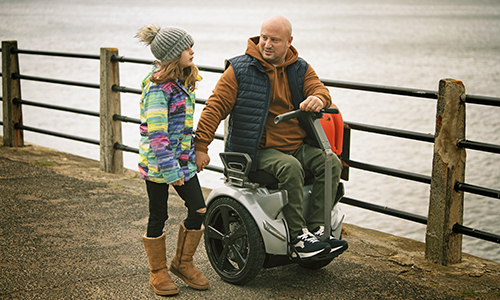You've just experienced a spinal cord injury and are trying to understand what that means for your future. This information may be a good place to start.
This information can help you find your way through any anxieties you may be feeling in the days ahead.
In the Beginning
This can seem like an overwhelming time, but with the help of your healthcare team, you will get through it. Initially, your team will be busy assessing the extent of your injury and managing your pain. You will have many examinations and diagnostic tests. You may also be given antiinflammatory medication, pain medication, and something to prevent blood clots from forming. It's not unusual to spend the first few days in an intensive care unit (ICU) while X-rays and scans are administered to help doctors determine your level of injury and whether there is damage in any other part of your body.
Getting the Help That’s Right for You
Between your healthcare team and physical therapist, you can count on getting the help you need. Your injury level will dictate whether you need a power or manual wheelchair. The more extensive your injury, the more equipment and assistive devices may be required. You may need assistance with daily living tasks as well, such as bowel and bladder care, positioning, transfers, dressing, and bathing or showering. Your healthcare team will ensure that you get the help you need while you're in the hospital and will assist in your rehabilitation. When you're ready to leave rehab, you'll want to make sure your home is ready for you. Sometimes a visiting therapist can help you make small, meaningful changes to your home beyond ramps and handrails.
Moving at Your Own Pace
It’s always good to get home. Once you do, it's important to get back into an exercise program to maintain cardiovascular health, muscle strength, and flexibility. Exercise will help make daily tasks easier and will increase your stamina and energy. And getting those endorphins going will help ease stress.
In the beginning, your exercise program will help you adjust to the new activities associated with being in a wheelchair. You'll also learn proper techniques that will keep you safe and help prevent further injury. Your program will be tailored to your specific needs.









